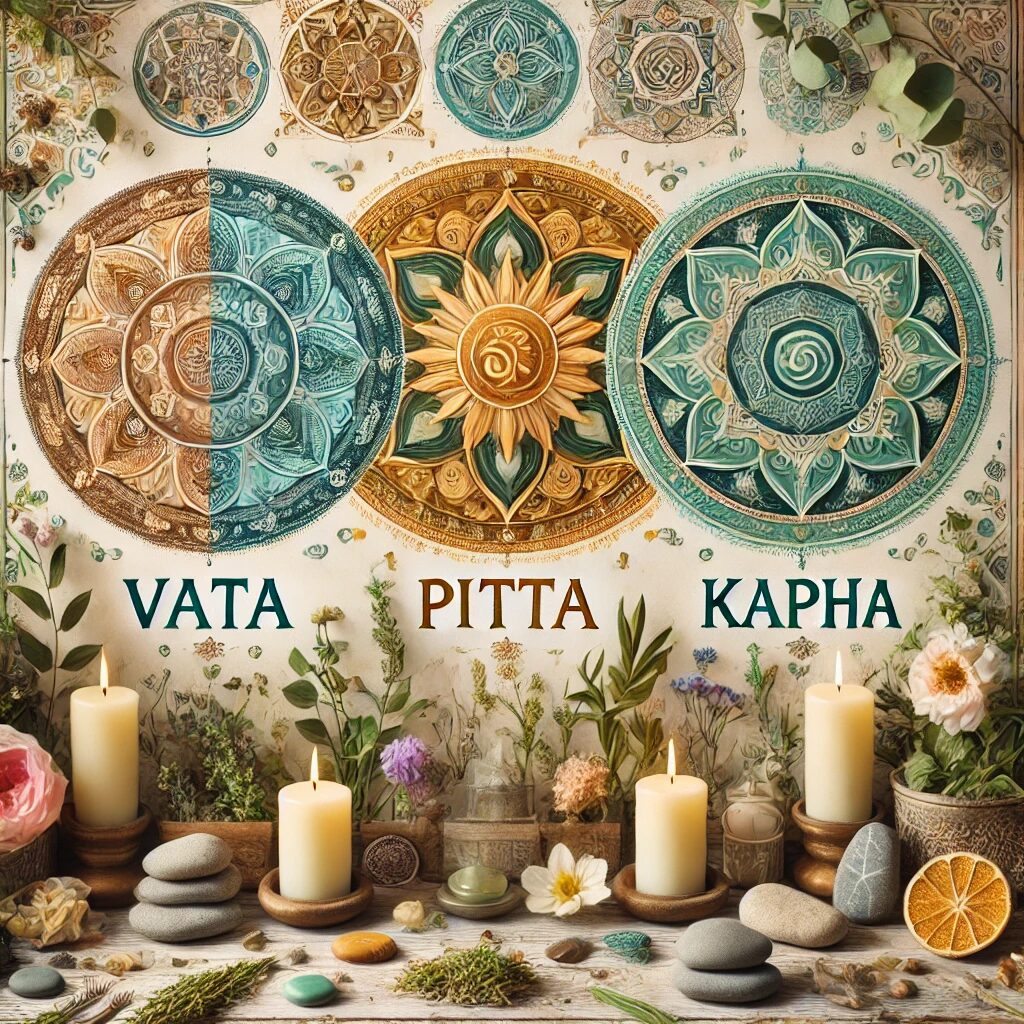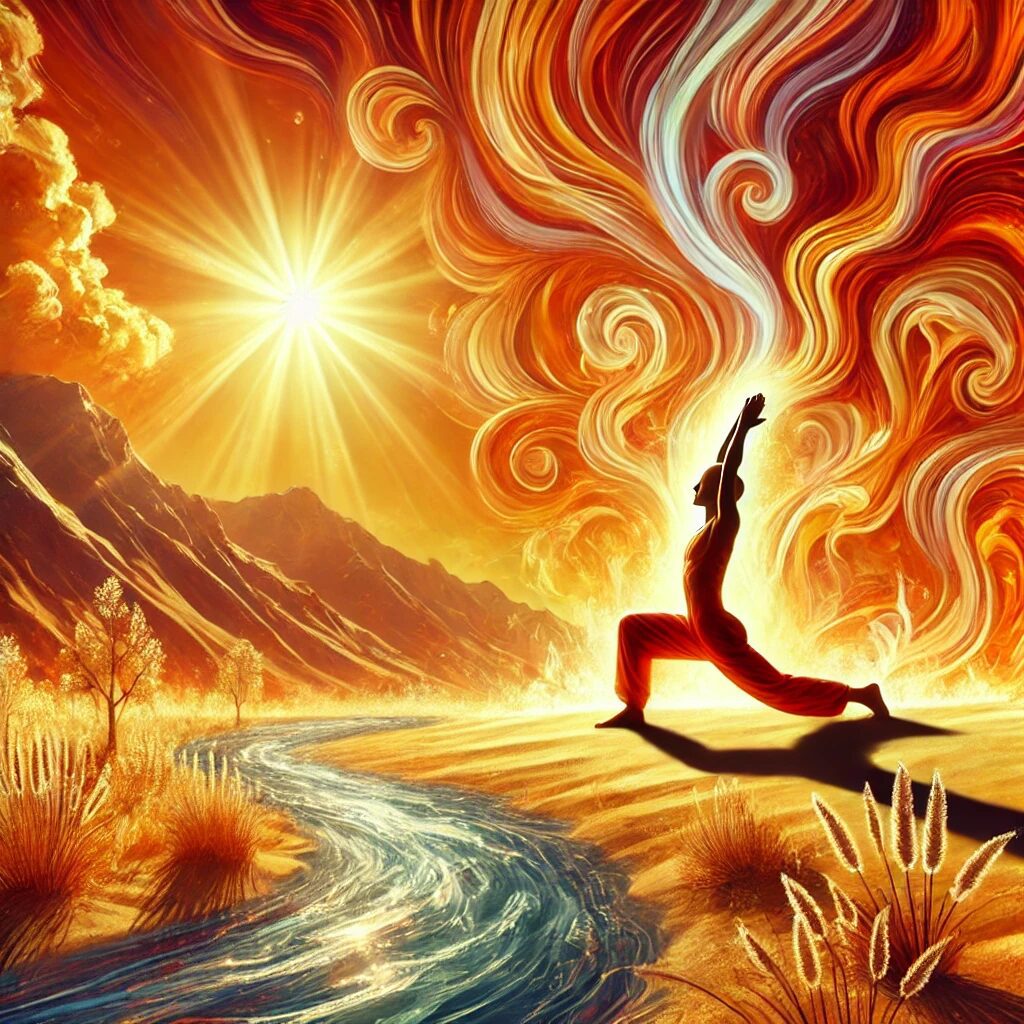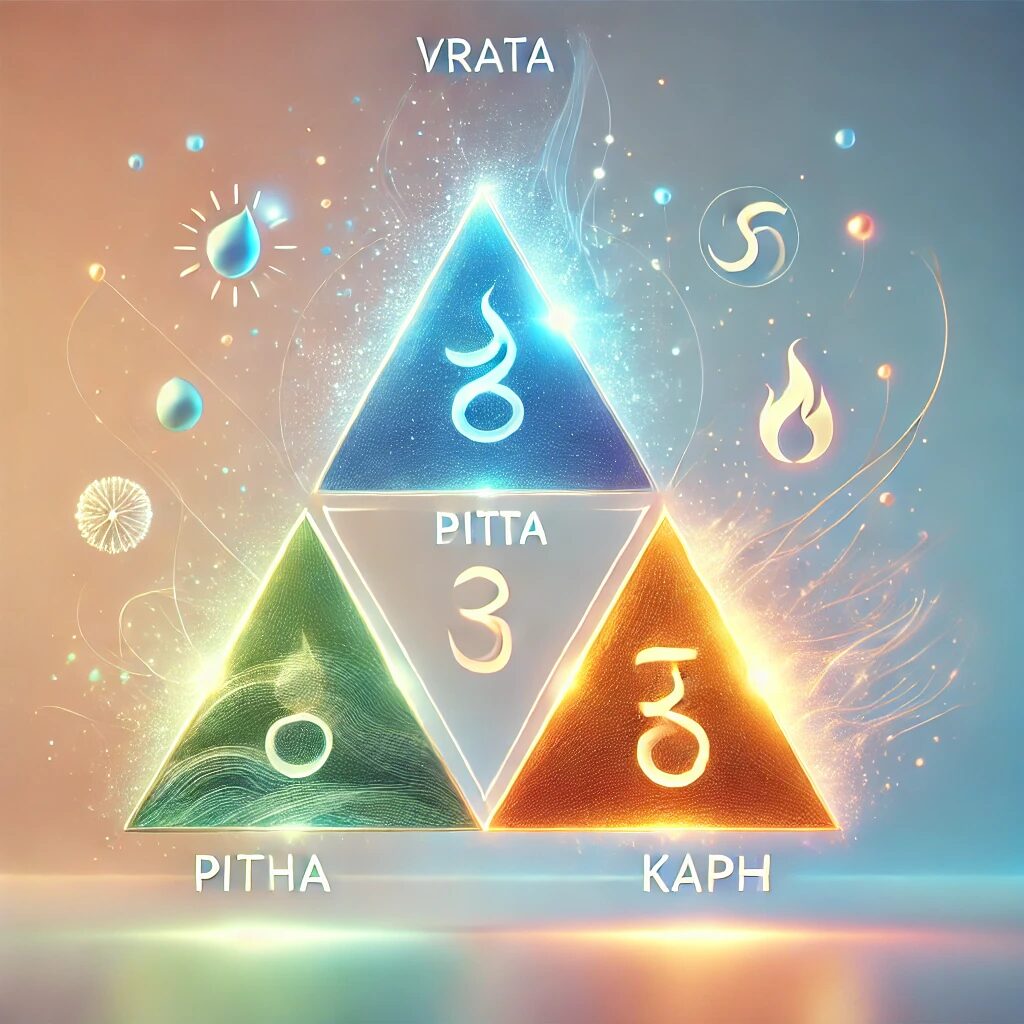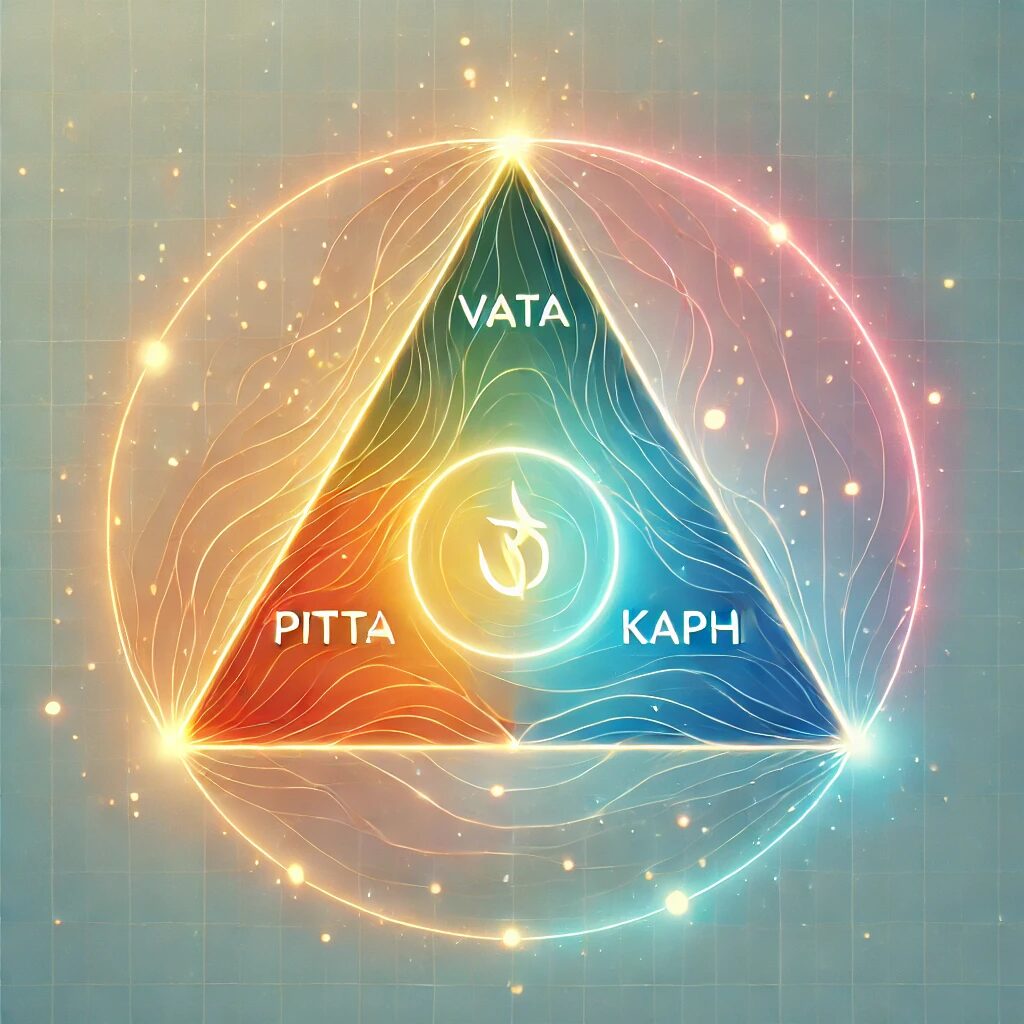Understanding Prakriti: The Key to Your Body Constitution in Ayurveda
The ancient medical system of Ayurveda worked out the fundamental notions that we now use to talk about Prakriti. The word refers to the living being’s essential, unique qualities that set it apart. When Ayurveda discusses an individual Paka or type of person, it trades in extremes, going to great lengths to describe the peculiar and distinguishing traits that set that individual apart. In this sense, Paka is Prakriti. Talking about Paka is about the qualities that set an individual apart. The starting point for this analysis is a three-part continuum that expands between three separate fundamentals (known as ‘doshas’) and changes proportionally at birth to create your Prakriti. This means that each person is born with a specific Prakriti that will carry on throughout their lives and influence just about every aspect of their being in some way.
By knowing in which dimensional form you exist on the continuum that stretches between doshas, you can learn more about specific dietary and self-care patterns (among other things) that will resonate on some frequency with your being.

What is Prakriti?
The fundamental concept in Ayurveda is Prakriti, which pertains to the unique body constitution of an individual. Prakriti is physical but mental and emotional; it subsumes all three realms of human existence and is the basis of personality. Prakriti, or body constitution, is determined primarily by heredity and environmental factors present at conception. Ayurveda states that a definite Prakriti predominates in everyone, and this essential body and personality type remains stable throughout a lifetime. Prakriti, like all concepts in Ayurveda, is a triadic constitution comprising three mutually interdependent dashes (constituting types) and their various permutations. From the Ayurvedic perspective, personality type can be determined mainly through assessing body type and vice versa.
Identification of your type (Prakriti) can significantly influence your health and well-being decisions. Someone with a dominant Vata dosha is better off with grounding activities and warm, nourishing foods.
Cooling practices and a balanced diet suit Pitta type.
When you know your Ayurvedic type, you can align your lifestyle with the practices those types are known to do better with.
Also, knowing Prakriti makes one more self-aware and accepting of oneself. It leads one to embrace one’s strengths and weaknesses and makes one more capable of _____________. It leads to more informed _____________. It certainly makes one more capable of ___________.
And, you know, that’s all. And knowing Prakriti, for the reasons already stated, makes one more capable of navigating the ‘life’ part of ‘work-life balance.’

The Three Doshas
In Ayurveda, the energies are the three fundamental types of physiologically and psychologically controlling forces. The ancient Indian medical system identified these forces as doshas. Vata, Pitta, and Kapha are derived from the five elements: Ether, Air, Fire, Water, and Earth. Each person has a distinct combination of these forces that profoundly affect their health, physical features, and mental condition.
Vata is made up of air and ether elements; it is dry, light, and mobile. If your predominant dosha is Vata, you’re likely to be very creative and energetic, and you might have a strong presence in the performing arts. But when Vata is out of balance, you might feel more anxious or insomniac than usual, have digestive irregularities, or find that you’re blocking your creativity more.

In contrast, Pitta corresponds to fire and water and has heat, intensity, and transformation qualities. Pitta types are often ambitious and highly focused. They are the types in many professions requiring laser light attention or great persistence. You know, think like a surgeon or sculptor. Pitta is also what you might impinge upon when trying to meditate, and your mind won’t stop itching with unkind thoughts.
Made of earth and water, Kapha has the qualities of stability and heaviness, unlike Pitta’s intensity and sharpness or Vats’s lightness and unpredictability. The dosha types strongly influence human personalities and even health conditions, not to mention how they might perform onstage or in front of a camera. When my wife and I visit the Ayurvedic retreat, an artist’s colony in the Indian state of Kerala, we meditate on our dosha types and their associated health and personality conditions.

A precise understanding of the doshas is essential for maintaining health and wellness. Basic nature recognition of these three doshas allows individuals to fashion their diets, lifestyles, and wellness practices in manners tipping the balance scales toward health. For instance, the Vata type requires the warmest, most nourishing kinds of foods to maintain balance. On the other hand, Pitta types should consume the fewest kinds of summer-like foods they can find. Since the sort of Kapha type probably thrives on the fewest kinds of the most stimulating, just-like-a-ride-on-the-PCH foods, I hardly know how to construct a chart that does all this up alongside each dosha’s characteristic meals, as well as health and common condition descriptions. Still, I give it a go. If you like, you can connect the following bunch of my summary disorder descriptions and dosha detailing to the chart above.

Identifying Your Body Type
Within Ayurveda, understanding our health and wellness starts by determining our Prakriti, or unique constitution.
You could find an online Prakriti quiz that asks about your physical appearance, emotional state, and lifestyle choices. Generally, the quizzes will sort you into three categories known as doshas: Vata, Pitta, and Kapha. Your characteristics will determine an understanding of those doshas. From the quiz, a physical observation of your body structure, the texture and color of your skin, and the speed and regularity of your digestion will be used.
A more advanced method is visiting an Ayurvedic NTM practitioner. Doing your physical assessment can take you so far from the truth that it can lead to lengthy discussions. It’s good to do your physical evaluation because of the subtitles in this book. You always have the right to know what is going on with your treatment because you have not delegated the right of doing self-diagnosis to any person until now. Despite this, it can take a very long time to arrive at your Prakriti through self-diagnosis.
Common symptoms for each dosha can be listed in a table, which makes your diagnosis even simpler. Vata people are generally normal. Their bodies are relatively thin, and they won’t be too concerned about obesity. They often won’t have perfect skin, as their skin is drier.
When it comes to doing things like passing gas or pee, this may not be too regular. Similarly, their body temperature may or may not be warm. The same goes for their body color. Those who are classified as Pitta will have a medium body size. They have determined jawlines with strong teeth. If that wasn’t enough, they paid some good money for braces, and their adult teeth are perfect. They have incredible appetites, nearly ravenous. The bad part of that is they get hungry when they’re hungry. Annoying is more of a thing for them than anxiety. They’re entirely fussy.

Balancing Your Prakriti for Optimal Health
Grasping the concept of body types, or Prakriti, is key to personalizing the diet, exercise, and daily routine. Each body type, Vata, Pitta, and Kapha, is associated with specific body characteristics that ought to dictate how the person plans their health. For example, the light-natured Vata person may want to supplement their diet with relatively heavier foods, or what people call grounding, and do calming exercises such as yoga. The fiery Pitta person will enjoy the cooling sensation of juicy fruits and benefit from moderate cardio. Exercise that is a little (but not too) intense is ideal. The Kapha person, endowed with a naturally heavier constitution, should engage in more stimulating activities and stick with lighter meals.
With each body type, one can find a list of the few herbs they should take regularly. The Vata person can warm up the body with herbs that promote similar effects: ashwagandha and ginger. The Pitta person’s body would appreciate cooling herbs, such as peppermint and coriander. The heavy Kapha can revive the body with stimulating herbs like turmeric and black pepper.
Everyone could use a few natural substances in the body to make it a more hospitable place; the effect can only be physically and emotionally positive.
To all people, the first item on the to-do list for balancing their Prakriti is to establish a daily routine. The routine to which everyone should strive to adhere would include all elements of daily life. The daily activities would consist of sleep, eating, and exercise. Eating would require the person to eat in a certain way, i.e., at regular times of the day, with the foods, so that they can awaken with the sun. Also included is the practice of greater mindfulness, whether by staying still or by practicing light exercise. Meditation and deep breathing are staples of routine.

Common Misconceptions about Prakriti
The common thought or belief is that once you understand the body constitution (Prakriti) in Ayurveda, you have the secret to who you are. That is not the case. In the simplest terms of definition, Prakriti is the unique proportion of your doshas (Vata, Pitta, and Kapha) listed above that you possess at birth. These create the physical, mental, and emotional traits that make your constitution at birth.
However, your constitution can and will most likely change as you live. How?
To oversimplify, let’s say you are born a Vata/Kapha (Vata is first because it dominates). If this remains your dosha balance, it is called Prakriti. If something changes, your current or altered state, the everyday practice of being you, is called Vikriti. What will change this?
A lot. Emotions, mainly Pitta emotions, such as anger and intensity, play a part. So does lifestyle. For example, Vata will move to the front and create what Ayurveda experts call Vata Derangement if you exhibit chronic stress. That is when the Pitta and Kapha, who loved you, left for the winter. It’s not as easy as a flip switch, but you get the point: Emotion can change dosha balance.
You will create a dosha imbalance if you do not eat well (you figure out how that is defined). When this occurs first, it is safe to say that you will move to a low state of mental health and elevated periods of mental disease. Chronic states of negativity are listed in this area (sorrow, sadness, depression, etc). Many practitioners (most modern medical and Ayur) will suggest that you know your Vikriti before knowing your Prakriti (more about this in a moment.)
Nutrition (fats, proteins, carbs, fruit, states of hydration, etc.), environment (where you live, region, season, altitude, etc.), and age (the age in which you live, from rock to tech to chaos) will affect how you position yourself against defining Prakriti in the next chapter.
In Ayurveda, understanding your Prakriti, or unique body constitution, is key. Your Prakriti balances your three doshas: Vata, Pitta, and Kapha. Each dosha represents different elements and qualities. Knowing your dosha proportions can give you amazing insights into your health—physically, mentally, and emotionally, and can help you tailor your lifestyle to promote balance and thriving.
Understanding your body type can help you see yourself and your natural tendencies in a new way and show you your strengths and “weak spots,” too. For example, if you’re predominantly Vata, you may have issues with anxiety and dryness. You may tend towards lethargy and weight gain if you’re predominantly Kapha. As soon as you have this clear and detailed knowledge of the makeup of your doshas, you can start making informed decisions on what to eat, how to move, and when to do the many things you do daily that have health consequences. And these choices can dramatically improve your health.
To learn more, visit Ayurveda at Namaste Studios to book an Ayurveda session. Additionally, you can find more of our Ayurveda Blogs here.
For a Limited Time: Get your NEW MOON JOURNAL for a massive discount at Amazon here!
Bonus for blog readers: Interested in learning how a Hybrid AI Chat Bot can save thousands of hours interacting with your clients? Click here for a FREE WEBINAR – It’s AMAZING!




